What is molding?
Molding, also known as moulding, is the process of shaping a material into a particular form or shape by using a mold. The term "molding" can refer to both the process of creating the mold itself and the process of using the mold to shape the material.
Molding is used in a wide variety of industries, including manufacturing, construction, and art. In manufacturing, molding is often used to create plastic parts, while in construction it can be used to create decorative trim or architectural features. In art, molding can be used to create sculptures or other three-dimensional works.
There are several different methods of molding, including injection molding, blow molding, compression molding, and rotational molding. Each method involves different techniques and equipment, but they all share the common goal of shaping a material into a specific form or shape.
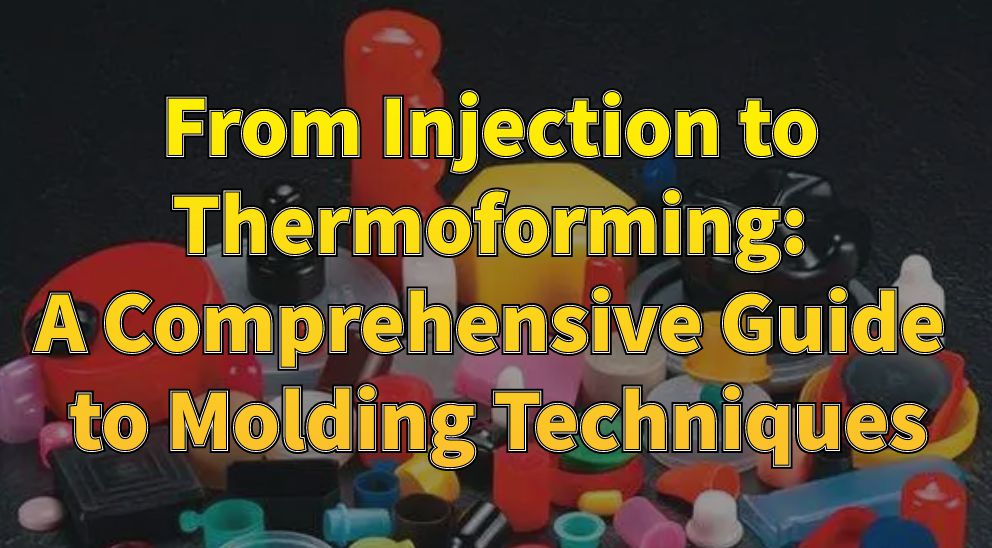
The process of forming and processing
Molding process refers to the process of shaping a material into a specific form by using a mold. The molding process is commonly used in the manufacturing industry to produce a wide range of products made from various materials such as metals, plastics, and ceramics.
The molding process typically involves the following steps:
Designing the mold: The first step in the molding process is designing the mold, which will be used to shape the material into the desired form.
Preparing the material: Once the mold is designed, the material to be molded is prepared. This may involve melting, mixing, or otherwise preparing the material to be used.
Pouring or injecting the material: The material is then poured or injected into the mold. The mold is designed in a way that allows the material to take on the desired shape as it cools or solidifies.
Cooling or solidifying the material: The material is allowed to cool or solidify inside the mold. This can be done through various methods such as air-cooling or cooling with water.
Removing the molded product: Finally, the molded product is removed from the mold, and any excess material is trimmed or removed to produce the finished product.
Overall, the molding process allows for the efficient production of complex shapes and precise dimensions, making it a popular choice in many manufacturing applications.
How many molding processes are there?
There are many types of molding processes, and the most suitable method for a particular application depends on the material being molded, the complexity of the shape, and the desired properties of the finished product. Here are some of the most common molding processes:
1.Injection molding
Injection molding: This process involves injecting molten material into a mold cavity under high pressure. It is commonly used for producing complex parts with high precision, consistency, and excellent surface finish.
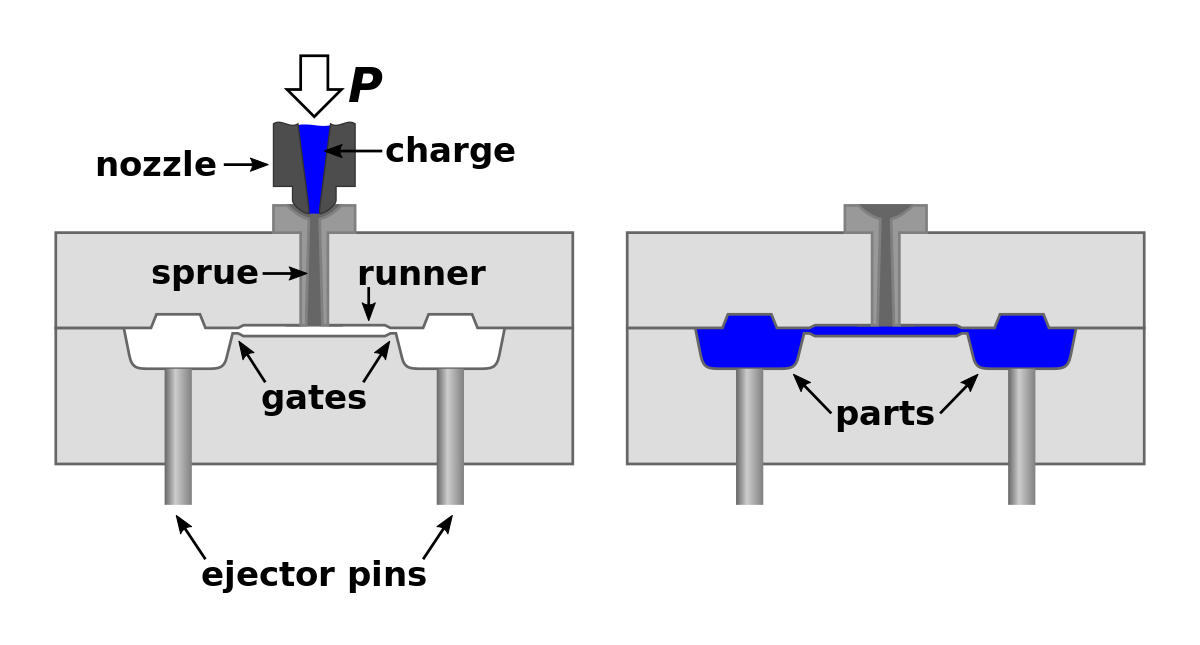
Pros:
High precision and accuracy in producing complex parts
High production efficiency and repeatability
Wide range of materials can be used
Cons:
High initial tooling cost
Limited to parts with relatively small sizes
Not suitable for low-volume production
2.Blow molding
Blow molding: This process involves inflating a molten tube of material to form a hollow part. It is commonly used for producing plastic bottles, containers, and other hollow parts with high efficiency and low cost.
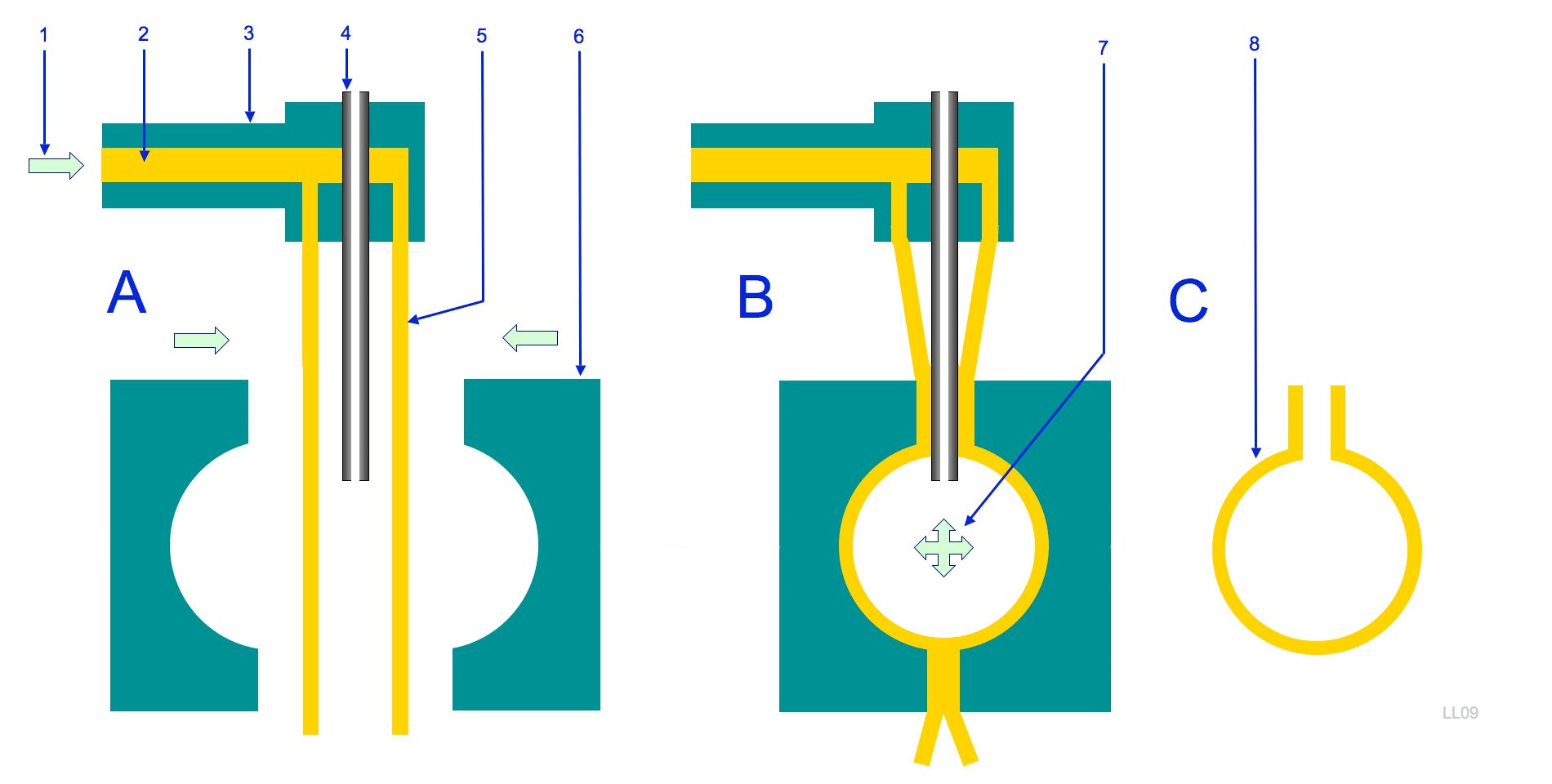
Pros:
High production efficiency and low cost
Ability to produce hollow parts with complex shapes
Suitable for producing large quantities of parts
Cons:
Limited to hollow parts with simple shapes
Not suitable for high-precision applications
Limited range of materials can be used
3.Compression molding
Compression molding: This process involves compressing a preheated material into a mold cavity under high pressure and temperature. It is commonly used for producing large, flat parts with uniform thickness, such as electrical panels and automotive components.
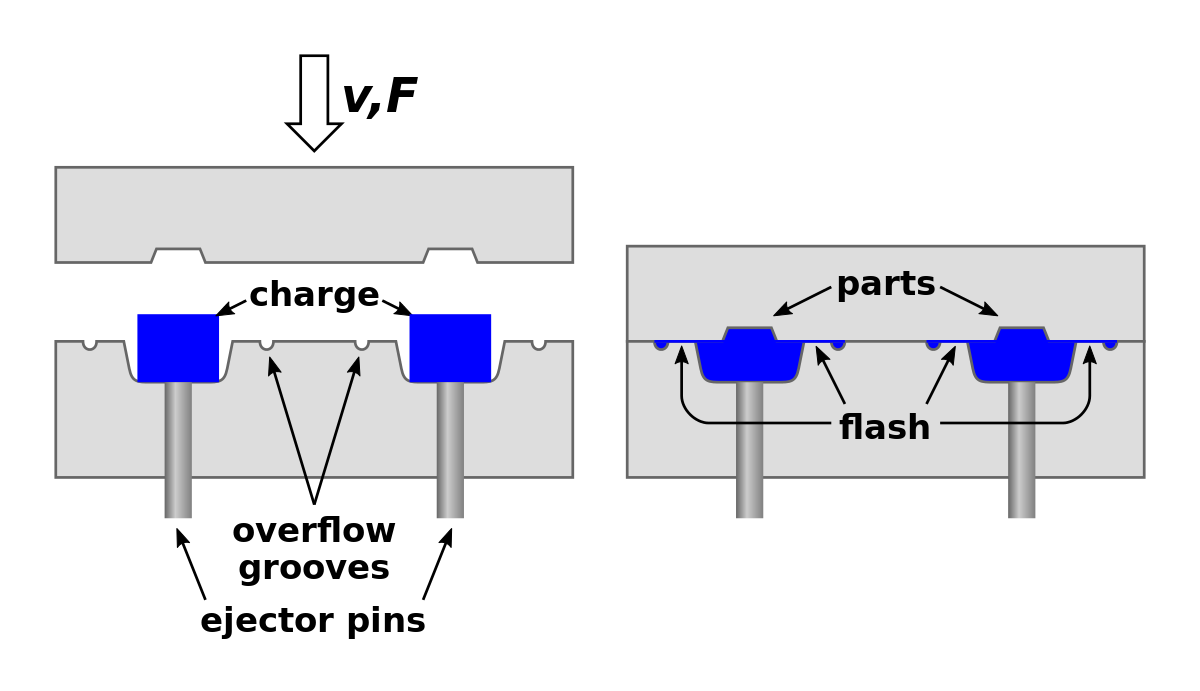
Pros:
High strength and durability of parts
Large parts with uniform thickness can be produced
Low cost and minimal waste
Cons:
Limited to parts with relatively simple shapes
Limited range of materials can be used
Long cycle time and slow production speed
4.Extrusion molding
Extrusion molding: This process involves forcing a heated material through a die to create a continuous profile with a constant cross-section. It is commonly used for producing long plastic or metal parts with uniform shape, such as pipes and tubing.
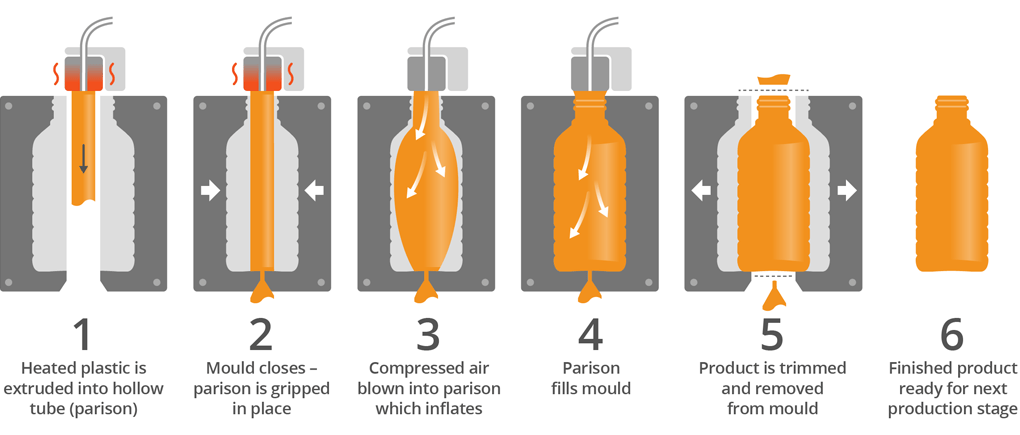
Pros:
High production efficiency and low cost
Suitable for producing long, continuous parts
Wide range of materials can be used
Cons:
Limited to parts with uniform cross-section
Limited to relatively simple shapes
Poor surface finish and dimensional accuracy
5.Rotational molding
Rotational molding: This process involves heating a hollow mold and rotating it around two perpendicular axes to distribute the material evenly and form the desired shape. It is commonly used for producing large, hollow parts with complex shapes, such as storage tanks and playground equipment.
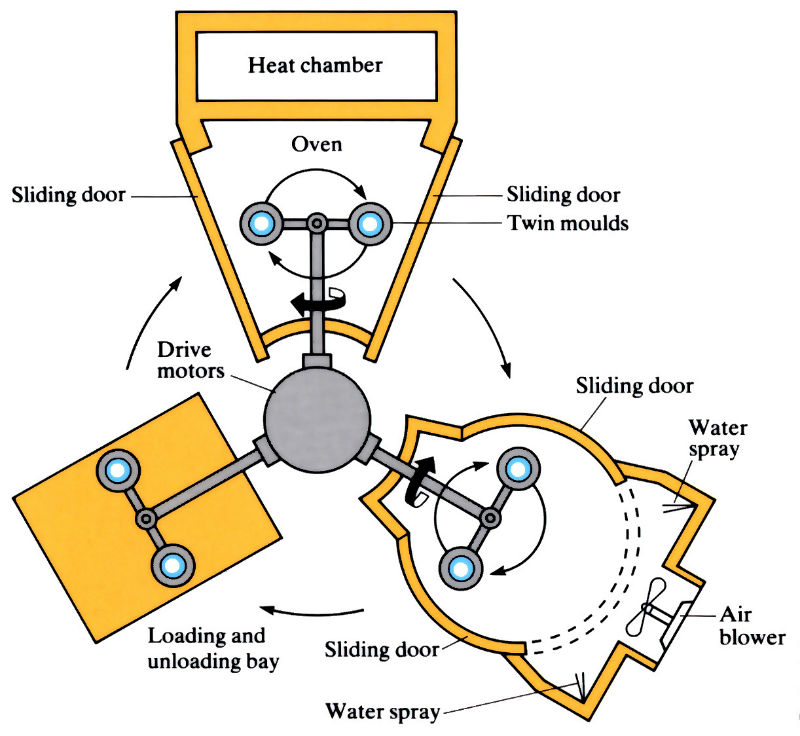
Pros:
Ability to produce large, complex parts with uniform wall thickness
Wide range of materials can be used
Low tooling cost
Cons:
Slow production speed
Limited to hollow parts
Poor surface finish and dimensional accuracy
6.Thermoforming
Thermoforming: This process involves heating a sheet of material until it becomes pliable and then forming it into the desired shape using a mold. It is commonly used for producing plastic trays, cups, and packaging materials.
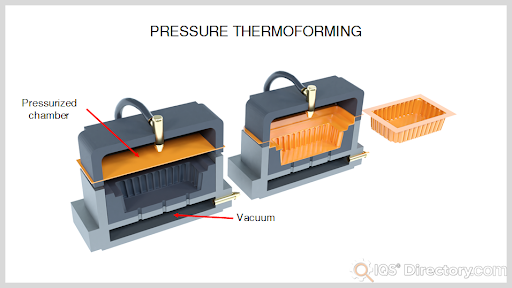
Pros:
Low tooling cost
Suitable for producing large, shallow parts with simple shapes
Wide range of materials can be used
Cons:
Limited to parts with relatively simple shapes
Poor dimensional accuracy and surface finish
Limited to low-volume production
7.Transfer molding
Transfer molding: This process involves transferring a measured amount of material into a mold cavity through a runner system under pressure and temperature. It is commonly used for producing parts with high precision, excellent surface finish, and reduced waste, such as electrical connectors and semiconductor parts.
Transfer molding
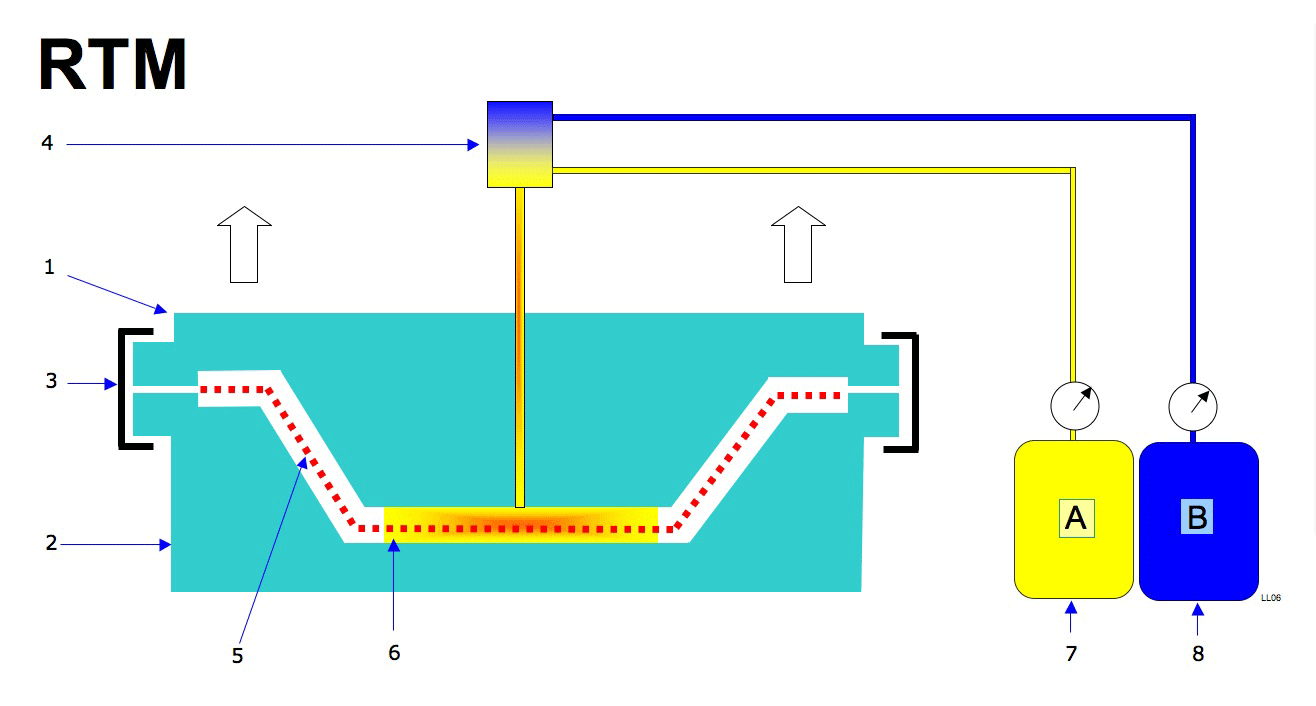
Pros:
High precision and accuracy in producing complex parts
Excellent surface finish and dimensional accuracy
Wide range of materials can be used
Cons:
High initial tooling cost
Slow production speed
Limited to parts with relatively small sizes
8.Vacuum forming
Vacuum forming: This process involves heating a sheet of material until it becomes pliable and then vacuum-forming it over a mold to create the desired shape. It is commonly used for producing large, shallow parts with uniform shape, such as signs and displays.
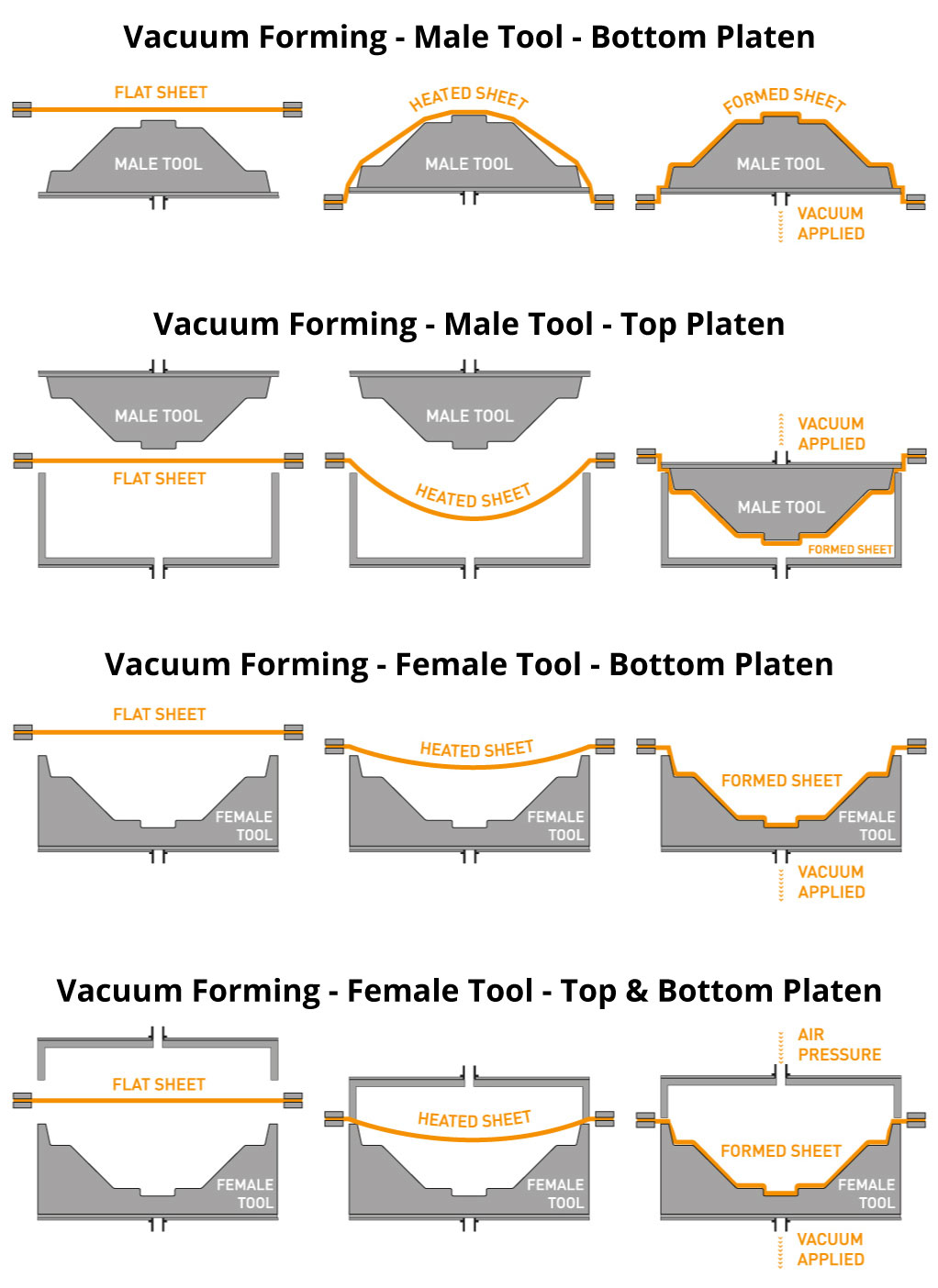
Pros:
Low tooling cost
Suitable for producing large, shallow parts with simple shapes
Wide range of materials can be used
Cons:
Limited to parts with relatively simple shapes
Poor dimensional accuracy and surface finish
Limited to low-volume production
9.Reaction injection molding (RIM)
Reaction injection molding (RIM): This process involves mixing two reactive components and injecting them into a mold cavity, where they react and solidify. It is commonly used for producing large, complex parts with high strength and durability, such as automotive bumpers and panels.
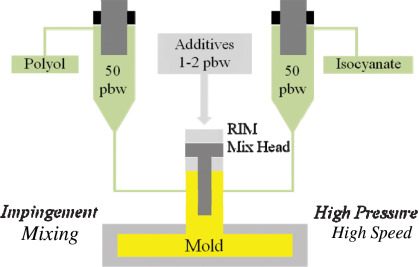
Pros:
High strength and durability of parts
Large, complex parts can be produced with excellent surface finish
Wide range of materials can be used
Cons:
High initial tooling cost
Limited to parts with relatively small sizes
Slow production speed
10.Cast molding
Cast molding: This process involves pouring a liquid material into a mold cavity and allowing it to solidify. It is commonly used for producing metal and ceramic parts with complex shapes and intricate details, such as jewelry and art objects.
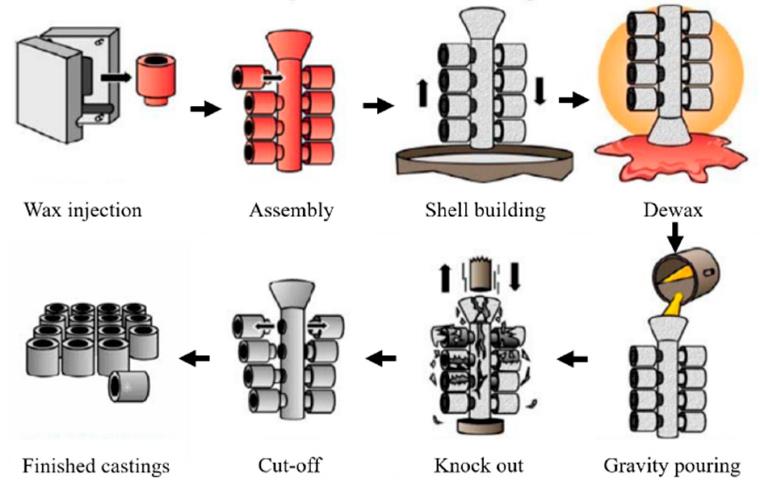
Pros:
Ability to produce parts with complex shapes and intricate details
Wide range of materials can be used
Low tooling cost
Cons:
Limited to low-volume production
Limited to parts with relatively small sizes
Poor dimensional accuracy and surface finish.
How is molding made?
The process of molding can vary depending on the material being used and the specific molding process being employed, but the general steps of the molding process are as follows:
1. Design: The first step in molding is to design the mold or tooling that will be used to shape the material. The mold is designed to the desired shape and size of the final product.
2. Material preparation: The material to be molded is prepared according to the specific requirements of the molding process. For example, plastics are melted down and mixed with additives such as colorants or stabilizers.
3. Loading: The material is loaded into the molding machine or tooling. In some processes, the material is heated to a specific temperature or pressure before it is loaded.
4. Molding: The molding process begins, which can vary depending on the specific molding process being used. The material is typically injected, compressed, or blown into the mold, which takes the shape of the desired final product. The material is then cooled and solidified inside the mold.
5. Ejection: Once the material has cooled and solidified, the mold is opened and the finished product is ejected from the mold. In some cases, the product may require additional finishing or trimming to remove excess material or improve the surface finish.
6. Recycling: If the material used for molding is recyclable, any excess or waste material can be collected and recycled for future use.
These steps can be repeated as necessary to create multiple identical products. Molding can be a complex process that requires careful attention to detail and precise control over factors such as temperature, pressure, and material properties to achieve high-quality results.
What are the benefits of molding?
Molding offers several benefits, which is why it is widely used in manufacturing, construction, and other industries. Some of the key benefits of molding include:
1. Customization: Molding allows for the creation of customized parts and products that are tailored to specific requirements. This flexibility can be especially valuable for unique or specialized applications.
2. Efficiency: Molding is a highly efficient process that can produce large quantities of parts quickly and cost-effectively. Once the mold has been created, it can be used to create many identical parts, reducing the need for additional setup and tooling.
3. Consistency: Molding provides a high level of consistency and repeatability, ensuring that each part or product is identical in shape and size. This consistency can be especially important for applications where precise dimensions are required.
4. Strength and durability: Molding can produce parts and products that are strong and durable, even when made from materials that are typically brittle or weak. This strength and durability can make molded parts ideal for use in high-stress applications.
5. Complexity: Molding can create parts and products with complex shapes and features that would be difficult or impossible to create using other manufacturing processes.
6. Cost-effectiveness: Molding is often a cost-effective way to produce parts and products, especially when compared to processes such as machining or casting.
These benefits make molding a popular choice for a wide range of applications, from creating plastic parts for consumer products to producing architectural features for buildings.
How is molding different from casting?
Molding and casting are both processes used to shape materials into specific forms, but they differ in several ways:
1. Materials: Molding can be used with a variety of materials, including plastics, metals, ceramics, and composites, while casting is typically used with metals and alloys.
2. Process: Molding involves shaping a material by pouring it into a mold or using a machine to inject or compress it into a specific shape. Casting involves pouring molten metal or alloy into a mold, allowing it to solidify, and then removing the mold to reveal the final product.
3. Cost: Molding can be a more cost-effective process than casting, particularly for materials like plastics that are less expensive than metals.
4. Complexity: Molding can be used to create complex shapes and features, while casting is typically used for simpler shapes.
5. Surface finish: Molding can produce a range of surface finishes, while casting typically results in a rougher surface finish that requires additional finishing work.
6. Volume: Molding can be used to produce high volumes of parts quickly and efficiently, while casting is typically used for lower-volume production runs.
In summary, molding and casting are similar processes that involve shaping materials into specific forms, but they differ in the materials used, the process itself, cost, complexity, surface finish, and production volume.
How long does it take to mold a product?
The time it takes to mold a product can vary depending on several factors, including the size and complexity of the product, the type of material being used, and the specific molding process being employed. However, in general, the molding process can take anywhere from a few seconds to several minutes.
For example, injection molding, which is commonly used for plastics, can take anywhere from a few seconds to several minutes depending on the size and complexity of the part. Compression molding, which is often used for rubber and thermoset materials, can take several minutes or longer to cure and solidify in the mold.
The time it takes to mold a product also depends on the specific equipment being used and the level of automation in the process. Automated molding systems can produce parts more quickly and consistently than manual processes, but they may also require more setup time and initial investment.
In summary, the time it takes to mold a product can vary widely depending on multiple factors, but it typically ranges from a few seconds to several minutes.
What are the common molding equipment?
There are many different types of molding equipment used in the various molding processes, each designed for specific applications. Here are some of the most common types of molding equipment:
1. Injection molding machine: An injection molding machine is used for the injection molding process, which involves injecting molten material into a mold. The machine consists of a hopper, where the material is fed into, an injection unit, which melts and injects the material into the mold, and a clamping unit, which holds the mold in place during the injection process.
2. Blow molding machine: A blow molding machine is used for the blow molding process, which involves blowing air into a preformed mold to create a hollow part. The machine consists of a hopper, where the material is fed into, a heating unit, which melts the material, and a blow mold, which is used to shape the part.
3. Compression molding press: A compression molding press is used for the compression molding process, which involves compressing a preformed material into a mold using heat and pressure. The press consists of a heated platen, which melts the material, and a hydraulic press, which applies pressure to the material to form it into the desired shape.
4. Rotational molding machine: A rotational molding machine is used for the rotational molding process, which involves rotating a mold filled with a powdered material around a heating chamber to melt and coat the inside of the mold. The machine consists of a heating chamber, a mold arm, and a cooling chamber.
5. Thermoforming machine: A thermoforming machine is used for the thermoforming process, which involves heating a sheet of material and then forming it into a specific shape using a mold. The machine consists of a heating unit, a forming station, and a cutting station.
In addition to these primary pieces of equipment, other equipment may be used to prepare and finish parts, such as material handling equipment, trimming tools, and inspection equipment.
The cost of molding equipment can vary widely depending on the type of equipment and the specific application. In general, injection molding equipment tends to be the most expensive, with prices ranging from tens of thousands to hundreds of thousands of dollars, depending on the size and complexity of the machine. Blow molding and rotational molding equipment can also be expensive, with prices ranging from tens of thousands to hundreds of thousands of dollars.
Compression molding presses tend to be less expensive than injection molding equipment, with prices ranging from tens of thousands to several hundred thousand dollars, depending on the size and complexity of the press.
Thermoforming equipment is typically less expensive than other types of molding equipment, with prices ranging from a few thousand to tens of thousands of dollars, depending on the size and complexity of the machine.
Overall, the cost of molding equipment can be a significant investment for a manufacturing operation, but it is important to consider the long-term benefits and potential cost savings that can be achieved through efficient and high-quality production.
How much does molding cost?
The cost of molding depends on several factors, including the type and complexity of the product being molded, the type of material being used, the specific molding process being employed, and the quantity of parts being produced.
The initial investment required to create a mold for a new product can be significant, with costs ranging from a few hundred dollars for simple molds to tens of thousands of dollars or more for complex molds. However, once the mold has been created, the cost per part can be relatively low, especially for high-volume production runs.
The cost of molding materials can also vary widely depending on the type of material being used, with plastics generally being less expensive than metals or composites.
Overall, the cost of molding can be difficult to estimate without specific details about the product being molded and the production process being used. It is best to consult with a molding service provider for a detailed quote based on the specific requirements of your project.
What are the safety precautions for molding?
Molding involves working with machinery, equipment, and potentially hazardous materials, so it is important to take proper safety precautions to prevent accidents and injuries. Here are some common safety precautions for molding:
1. Personal protective equipment (PPE): Workers should wear appropriate PPE, including safety glasses, gloves, and respiratory protection, depending on the specific hazards associated with the molding process.
2. Machine guarding: Machinery and equipment should be properly guarded to prevent workers from coming into contact with moving parts or hot surfaces.
3. Material handling: Workers should use proper lifting techniques and equipment when handling heavy molds, raw materials, and finished products.
4. Training: Workers should receive training on the proper use of machinery and equipment, as well as safe handling of materials and tools.
5. Ventilation: Adequate ventilation should be provided to prevent the buildup of fumes or dust, which can pose respiratory hazards.
6. Fire safety: Molding processes may involve the use of flammable materials, so fire safety measures should be in place, including proper storage and handling of flammable materials and the presence of fire suppression systems.
7. Emergency preparedness: Workers should be trained in emergency procedures, including how to shut down equipment in an emergency and how to evacuate the facility in case of a fire or other hazard.
By following these safety precautions, workers can help ensure a safe working environment and reduce the risk of accidents and injuries.
Conclusion
Molding is an important manufacturing process that enables the creation of objects of various shapes and sizes. It involves using a mold to shape a material into the desired form. There are several different types of molding techniques available, including injection molding, blow molding, compression molding, rotational molding, and thermoforming. Each technique has its own unique advantages and disadvantages, and the choice of technique depends on various factors such as the desired part characteristics, production volume, and cost.
Injection molding is the most widely used technique and is ideal for creating complex, high-volume parts with tight tolerances. Blow molding is used for producing hollow parts such as bottles and containers, while compression molding is often used for large, flat parts with uniform thickness. Rotational molding is used for creating large, hollow parts with a uniform wall thickness, and thermoforming is often used for creating packaging, trays, and other shallow parts.
The equipment required for molding can be expensive, but the long-term benefits and potential cost savings make it a worthwhile investment. Safety precautions should be taken when working with molding equipment to ensure the safety of workers and the quality of the final product. By understanding the different molding techniques and their advantages and disadvantages, manufacturers can choose the most appropriate technique for their needs and produce high-quality parts efficiently and cost-effectively.
Precision Machining and Manufacturing Services: Introducing JTC-CNC
JTC-CNC is a leading provider of precision machining and manufacturing services, specializing in CNC machining, milling, turning, and other custom fabrication processes. Our team of highly skilled engineers and technicians use state-of-the-art equipment and software to deliver precision parts and products for a wide range of industries, from aerospace and defense to medical and automotive. With a commitment to quality, reliability, and customer satisfaction, JTC-CNC has earned a reputation as a trusted partner for businesses seeking high-quality, cost-effective solutions. Whether you need a single prototype or a large-scale production run, our team has the expertise and capabilities to meet your needs and exceed your expectations. Contact us today to learn more about our services and how we can help you bring your ideas to life.

